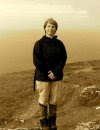

Our most recent field trip was to compare two different large religious communities in Cincinnati, Crossroads Community Church and the Islamic Center of Cincinnati. Both institutions work industriously to build community for their members, and in their own ways, they reach out to the city to include new people. Crossroads advertises as "the church for people who don't like church". Most traditional Christian symbols are absent: no crosses, no altar, no crucifixion. My personal sense of irony was piqued by the fact that where an altar would have been is where the rock-n-roll band was located, and the woman who gave the opening invocation was wearing a Mickey Mouse t-shirt. There are, however, lots of bibles available, and the sermons are very Jesus-centered. There is also bible study and faith exploration groups. There was a speaker at the service we visited who testified to how Jesus came into his life when he went on a service trip to India. A person did not need to know a single thing about the church to feel comfortable because the words to the songs were up on the two giant screens, the room was dark, and people could come and go during the sermon as they pleased. It was all about saving face, but the minister did, in fact, go on a five minute tirade about the "slackers and losers who come to drink the free coffee and use the free wifi and not support their sorry asses by giving to the collection plate." I was also troubled when this enthusiastic person spent about five more minutes explaining how Hindus and Buddhists were losers because they did not make an effort to help people, not like the brave Christians who were trying, apparently, to save India single handedly from the Hindus while the lazy Buddhists sat around and just suffered. However, in spite of the focus on money and the ignorance concerning other belief systems, the service was fun and accessible for the almost 4,000 people who filled the audience. Also, one cannot deny that Crossroads has an excellent band. They totally rocked.

Our next stop on our religious tour was to the Cincinnati Islamic Center in West Chester. A very enthusiastic woman gave us a two and a half hour tour! She was clearly an experienced rhetorician in English, and I was sad we could not hear her exhort us in Urdu, her native language, because I bet it would have been even better. She emphasized the kinship of Christianity and Islam using examples from shared stories, and she explained the beliefs of Islam using vivid metaphors and parables. She was clearly a woman of great faith. She spent a lot of time talking about Islam, the seven pillars, and the influence of Islam on daily life. It is currently Ramadan, so she spent a good deal of time explaining how fasting helps a person become more sensitive and disciplined as a Muslim, and that fasting from sunup to sundown won't kill you. My aikido teacher is an observant Muslim, and he even came to practice during Ramadan, but he did say he was all worn out after practice and a little stressed about not being able to have a drink of water after practice. This Pakistani woman was very insistent that Islam has laws that protect women. I think the confusion for non-Muslim Westerners is the conflation of religion with culture. Patriarchal cultures will oppress women, even if the Qur'an says not to. Personally, I remain confused on this point. I have read the sections of the Qur'an where it explains the rights given to women, so I get confused when Saudis, who are observant Muslims, seem to deny these rights to women. Also, as a Westerner strongly influenced by Jefferson, the idea of my holy book telling me about civil law is a little disconcerting. Sharia assumes a homogeneous population which we don't have in the United States. In order for a heterogeneous population to live together peacefully, we just can't mix religion and politics.








